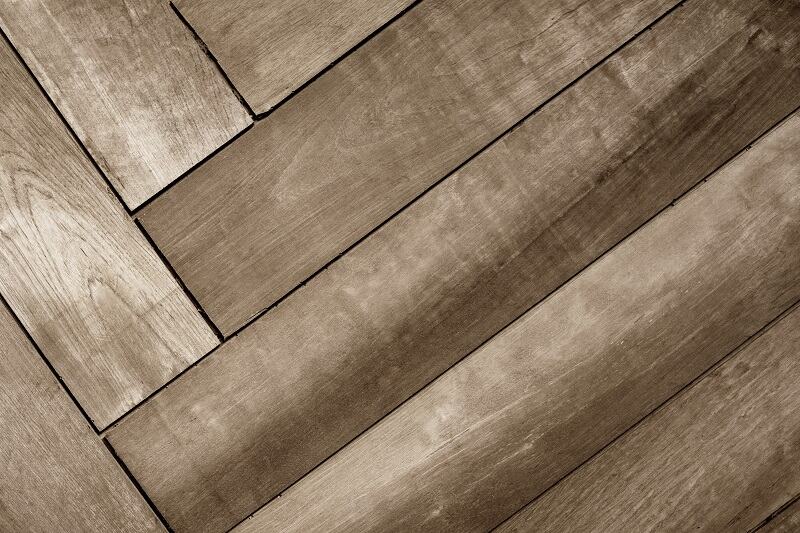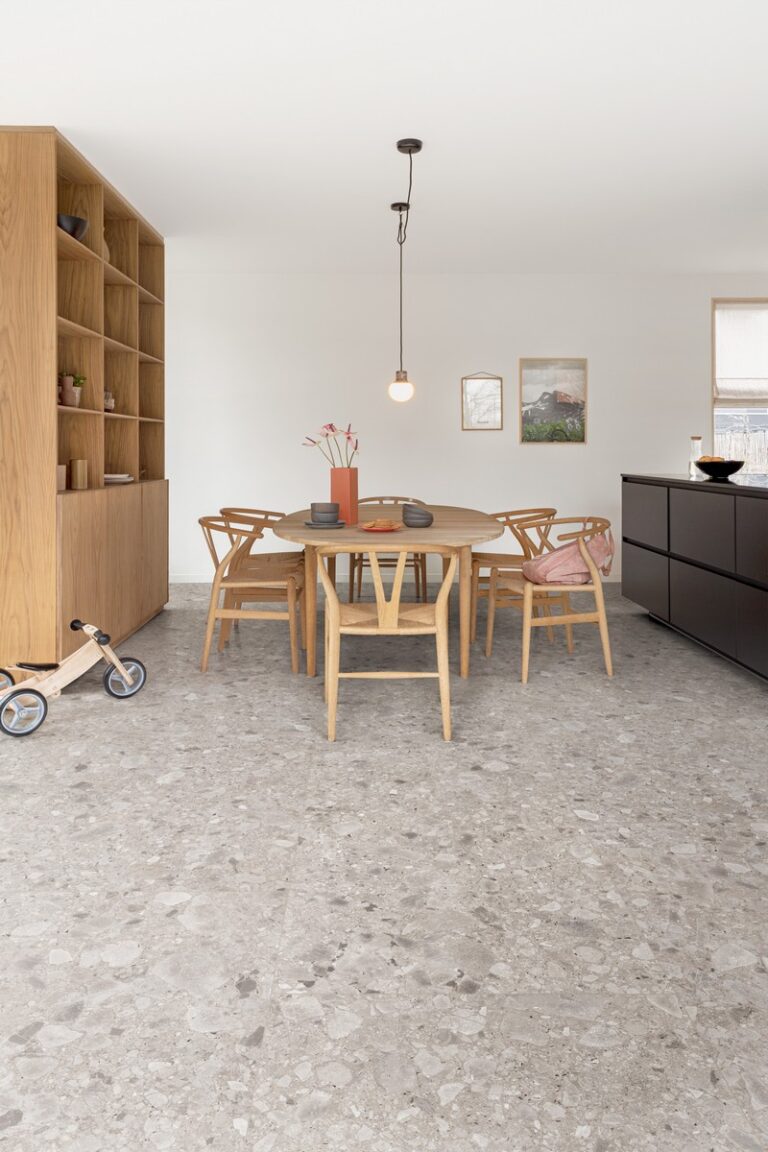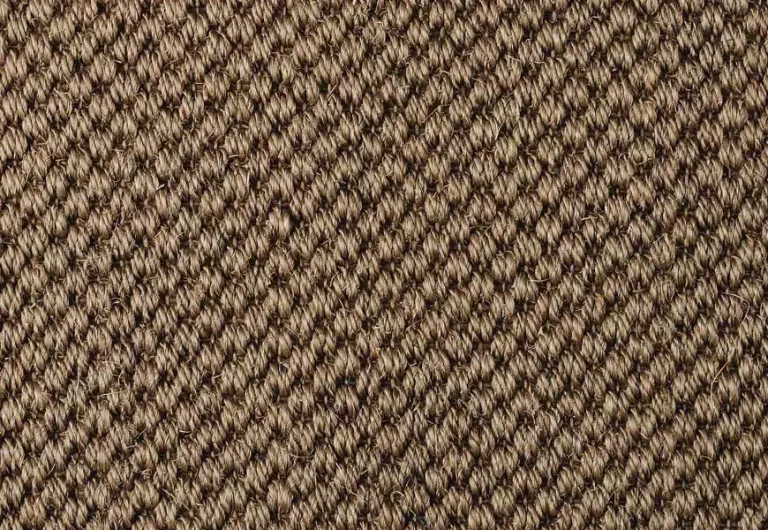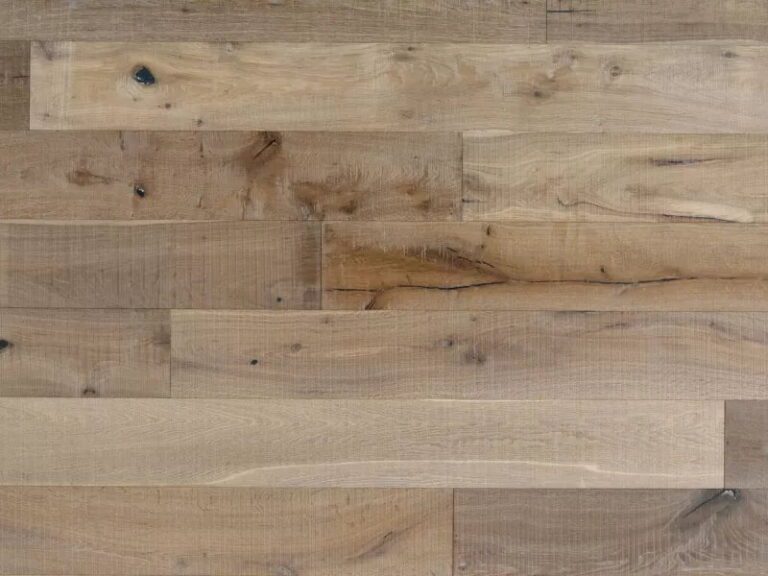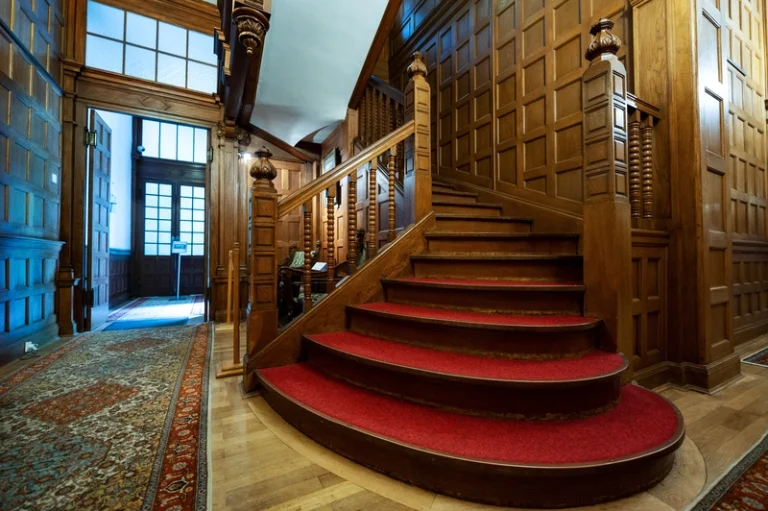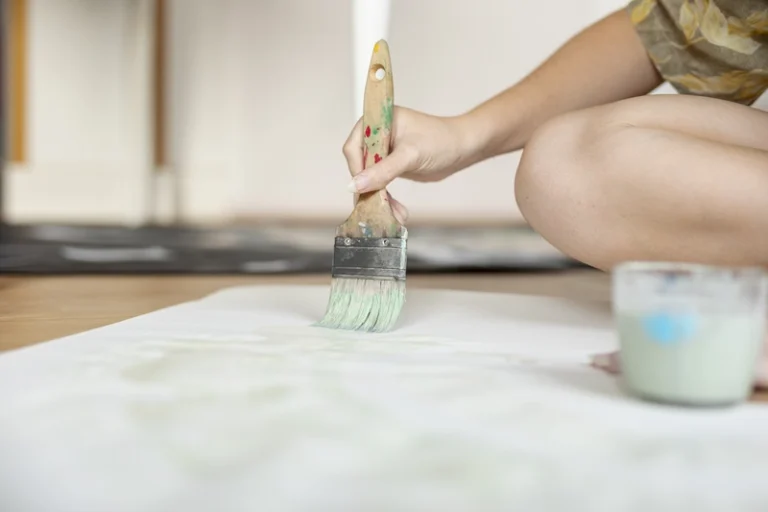Wood flooring is a popular choice for homeowners due to its timeless appeal and durability. In this comprehensive guide to wood flooring, we’ll explore the different types of wood flooring, including solid wood, engineered wood, and laminate options. We will also discuss the numerous benefits of choosing wood flooring, such as its aesthetic appeal and easy maintenance. We will provide valuable insights on factors to consider before making a decision, as well as tips for wood flooring, including installation and maintenance. Whether you’re considering wood flooring for your home or simply want to learn more about it, this article has you covered.
Key Takeaways:
Wood flooring adds durability, aesthetics, and value to homes. Consider budget, location, lifestyle, and installation method before choosing wood flooring. Proper maintenance includes regular cleaning, protecting from moisture, and refinishing or repairing when needed. Here is a complete guide to wood flooring for you.
What Is Wood Flooring?
Wood flooring, also known as hardwood flooring, is a popular and timeless choice for enhancing the aesthetics and durability of residential and commercial spaces. It encompasses floor coverings made from solid wood, engineered wood, and laminate, offering a diverse range of options to suit different preferences and requirements.
Hardwood flooring adds a warm and natural elegance to any space, making it a highly sought-after option for interior design. From the rich grains of solid wood to the versatility of engineered wood and laminate, wood flooring offers various styles, finishes, and installation methods, providing flexibility for different design schemes.
The durability and longevity of wood flooring make it a sound investment for any property. It withstands heavy foot traffic and can be refurbished, ensuring that it continues to impress for years to come.
Types of Wood Flooring
Wood flooring comes in various types, including solid wood flooring, engineered wood flooring, and laminate wood flooring. Each type has its own unique characteristics, installation methods, and maintenance requirements. These types are further defined by renowned brands such as Ted Todd and Kahrs, offering premium quality and innovative designs.
a. Solid Wood Flooring
Solid wood flooring is crafted from hardwood species such as Oak, Walnut, and other woods known for their durability and natural beauty. The Janka Hardness Scale is often used to measure the hardness of these wood species, providing valuable insights into their suitability for different applications.
You should understand the guide to hardwood flooring given that each wood species offers unique characteristics, and Oak is renowned for its strength and resistance to wear and tear, making it ideal for high-traffic areas.
The Janka Hardness Scale quantifies the wood’s ability to withstand wear and denting, assisting homeowners and designers in selecting the appropriate species for their specific needs. Both Oak and Walnut are versatile options that can complement various interior styles while adding warmth and character to any space.
b. Engineered Wood Flooring
Engineered wood flooring consists of layers of plywood or high-density fibreboard topped with a hardwood veneer, offering enhanced stability and resilience. It meets industry standards set by organisations like WoodTrend, CFA, BSI, and RH, ensuring quality and performance.
The construction of engineered wood flooring allows for greater dimensional stability compared to solid hardwood, making it suitable for installation in areas with fluctuating humidity levels.
Industry certifications, such as those from WoodTrend and CFA, validate the product’s adherence to rigorous quality and sustainability standards.
The hardwood veneer layer adds a touch of natural beauty and warmth to the flooring, enhancing the aesthetics of any space.
c. Laminate Wood Flooring
Laminate wood flooring offers a cost-effective alternative to real wood. It features a high-density fibreboard core with a photographic wood layer. This includes environmentally friendly options certified by the Forest Stewardship Council (FSC) and exotic designs such as African Iroko, providing diverse aesthetic choices.
The high-density fibreboard core makes laminate wood flooring incredibly durable. It is resistant to scratches and suitable for high-traffic areas. The photographic wood layer is designed to replicate the look of real wood while offering more stability and moisture resistance.
This characteristic grants the flooring a longer lifespan and reduced need for replacement. This makes it a sustainable choice for many homeowners. With this wood flooring buyers guide, everyone can express their personal style and enhance the ambience of their living space through an array of unique laminate wood flooring design options, from modern to classic.
Benefits of Wood Flooring
When talking about guide to wood flooring, of course we can’t miss its benefits. Wood flooring offers numerous benefits, including exceptional durability, timeless aesthetics, easy maintenance, and the ability to significantly increase the property’s market value.
These advantages make it a preferred choice for discerning homeowners and commercial property owners alike.
With its durable nature, wood flooring is a long-lasting investment that can withstand heavy foot traffic, making it an ideal option for high-traffic areas in homes and commercial spaces.
Its natural beauty adds warmth and elegance to any setting, creating a welcoming and inviting atmosphere. The easy maintenance of wood flooring makes it a practical choice for busy individuals, requiring only regular sweeping and occasional refinishing to maintain its lustre. This low maintenance aspect saves both time and money in the long run.
The value of a property can be greatly enhanced with the installation of wood flooring. Prospective buyers are often willing to pay a premium for homes with wood floors, recognising their timeless appeal and long-term durability. This makes it a strategic investment for property owners looking to increase their home’s resale value.
a. Durability
Wood flooring’s durability is often attributed to the natural hardness of wood species, as measured by the Janka Hardness Scale. Renowned manufacturers such as Ted Todd offer premium wood flooring known for its exceptional durability and long-term performance.
Wood hardness is a crucial factor in determining the durability of a floor. This characteristic varies among different wood species. For example, Brazilian Cherry and Hickory have higher Janka ratings, indicating better resistance to wear and tear. The National Wood Flooring Association’s standards serve as industry benchmarks, providing consumers with reliable criteria for their purchasing decisions. When investing in wood flooring, it’s important to choose reputable providers who carefully source, treat, and install the highest quality wood. This ensures longevity and customer satisfaction.
b. Aesthetics
The aesthetics of wood flooring are diverse, ranging from the authentic look of real wood laminate flooring to the natural charm of wood species such as Pine, Larch, and Douglas fir. Many premium wood flooring manufacturers offer a wide selection of wood flooring options to cater to various design preferences.
Wood flooring has an unparalleled ability to enhance the aesthetic appeal of any space, infusing warmth, character, and natural beauty. Real wood laminate flooring replicates the authentic grain patterns and textures of various wood species, offering a cost-effective yet visually stunning alternative.
The plethora of natural wood species, including Pine, Larch, and Douglas fir, provides an array of colour variations, grain patterns, and durability, catering to diverse design preferences. Renowned providers in the industry understand the significance of quality and design diversity.
Whether it’s the timeless elegance of oak flooring, the rustic appeal of reclaimed wood flooring, or the modern sophistication of walnut flooring, many reputable suppliers like TEKA Flooring ensure that customers can choose from a range of styles, finishes, and installation methods to achieve their desired aesthetic.
c. Easy Maintenance
Wood flooring stands out for its easy maintenance, requiring simple cleaning routines and occasional refinishing as per expert recommendations outlined in the wood flooring buyers guide. Implementing such tips for wood flooring ensures long-lasting beauty and performance.
Regarding maintenance advantages, wood flooring offers durability and strength, standing up to everyday wear and tear better than many other flooring options. With regular sweeping and occasional mopping, it is easy to keep wood floors looking pristine.
Unlike carpets, wood flooring tends to trap less dust, pet dander, and other allergens, contributing to a healthier indoor environment.
d. Increases Property Value
One of the notable benefits of wooden flooring is its ability to increase the value of properties, making it a wise investment choice. Leading brands like Ted Todd and Kahrs offer premium wooden flooring options known for their contribution to property value enhancement.
When potential buyers step into a property with exquisite wooden flooring, they are immediately struck by the timeless elegance and warmth it exudes. This visual appeal can leave a lasting impression, significantly influencing their perception of the property’s value.
The durability and longevity of wooden flooring from reputable brands like Ted Todd and Kahrs further underscore its value-boosting attributes, offering assurance to homeowners and potential buyers alike.
Factors to Consider Before Choosing Wood Flooring
Selecting wood flooring involves considering factors such as budget constraints, the specific location and climate of the installation area, the lifestyle and foot traffic in the space, and the preferred installation method.
These considerations play a crucial role in determining the most suitable wood flooring option for any given environment.
Wood flooring is available in a wide range of options, and each type has its own unique characteristics and benefits.
When budget is a constraint, engineered wood flooring may be a more cost-effective choice compared to solid hardwood, as it offers greater stability and is typically less expensive.
Environmental considerations also come into play, with eco-friendly options like bamboo and reclaimed wood gaining popularity due to their sustainable sourcing and low environmental impact.
Considering the lifestyle and foot traffic is vital as well, with high-traffic areas benefitting from harder wood species such as oak or maple, while softer woods like pine may be suited for less frequented spaces.
The preferred installation method can influence the choice.
Tongue-and-groove flooring is suitable for a traditional look, while click-lock systems offer easier DIY installation.
a. Budget
Budget considerations impact wood flooring selections. For cost-effective options, laminate wood flooring offers a range of designs, including environmentally-friendly choices like African Iroko and classic options like Pine. These provide viable solutions for diverse financial constraints.
When choosing laminated wood flooring, homeowners can achieve an appealing balance between cost and aesthetics. Its affordability makes it an attractive option, especially for those with budgetary restrictions.
The availability of environmentally friendly options, such as African Iroko, allows homeowners to embrace sustainability without compromising on style or quality. Similarly, classic wood varieties like Pine provide a timeless and cost-effective choice that appeals to a wide range of budget-conscious consumers.
b. Location and Climate
The specific location and climate of a space play a crucial role in wood flooring decisions, with considerations for factors such as moisture resistance and environmental sustainability.
Exotic options like African Iroko certified by the Forest Stewardship Council (FSC) are ideal for certain environments.
For instance, in coastal or humid regions, the high moisture content of the air can pose challenges for traditional hardwood floors. This leads consumers to seek out exotic wood species with inherent moisture-resistant properties.
In areas with strict environmental regulations, the certification from organizations like the FSC is highly valued. It verifies that the wood has been responsibly and sustainably sourced.
c. Lifestyle and Foot Traffic
Understanding lifestyle factors and foot traffic patterns is essential in selecting wood flooring. Resilient options like hardwood flooring cater to high-traffic areas and accommodate diverse lifestyle choices, ensuring long-term satisfaction with the chosen flooring material.
When considering wood flooring, it’s crucial to align the material with the demands of your daily life.
Hardwood flooring, for instance, offers exceptional durability and resilience, making it ideal for areas with high foot traffic. Its ability to withstand wear and tear without sacrificing aesthetics makes it a popular choice for households with children, pets, or frequent entertaining.
Hardwood flooring can effortlessly complement various interior styles, providing a versatile and timeless base for any design vision. This blend of durability and adaptability ensures that the chosen flooring material aligns with the dynamic nature of modern lifestyles, offering a reliable and lasting solution.
d. Installation Method
The chosen installation method for wood flooring impacts its long-term performance, requiring adherence to specific guidelines and maintenance instructions to ensure optimal durability and aesthetic appeal. Understanding these requisites is crucial for successful wood flooring installations.
Installers should carefully consider the unique features of the chosen installation method, such as glue-down, nail-down, or floating, to match the wood flooring type and subfloor conditions for a seamless fit.
Following manufacturer instructions for acclimatization, moisture testing, and subfloor preparation is essential to prevent issues like warping, buckling, or uneven surfaces.
In addition, homeowners and business owners need to follow recommended maintenance practices, including regular cleaning, using suitable products, and addressing spills promptly, to preserve the beauty and functionality of their wood flooring.
How to Install Wood Flooring?
The installation process is one thing that should also not be skipped in the guide to wood flooring.
Installing wood flooring involves essential steps such as preparing the subfloor, acclimatising the wood to the installation area, and implementing the appropriate installation method.
These steps ensure the successful and long-lasting installation of wood flooring.
Subfloor preparation is crucial to create a smooth and level surface for the wood flooring. This often involves removing any existing flooring materials, ensuring the subfloor is dry and clean, and addressing any imperfections.
It’s equally important to acclimatize the wood to the environment in which it will be installed. This process allows the wood to adjust to the temperature and humidity of the installation area.
Choosing the right installation method, whether it’s nailing or gluing the flooring, depends on the type of wood, the subfloor material, and the desired aesthetic. Nail-down installations are traditional and provide a strong, stable floor, while glue-down methods are suitable for concrete subfloors.
a. Preparing the Subfloor
Preparing the subfloor for wood flooring installation involves assessing the condition of the subfloor, addressing any imperfections, and ensuring a smooth and stable base for the new flooring. This is essential for the long-term performance and appearance of the wood flooring.
Assessing the condition of the subfloor is crucial as it enables the identification of any unevenness, moisture issues, or structural weaknesses that could potentially affect the wood flooring.
Mitigating imperfections through methods such as levelling compounds or plywood underlayment can minimise the risk of future problems, such as squeaking or shifting of the wood flooring.
Ensuring stability provides a durable foundation for the wood flooring, preventing unnecessary wear and tear over time.
b. Acclimating the Wood
Acclimatising the wood flooring to the installation environment is critical, allowing the material to adjust to the ambient temperature and humidity levels, ensuring stability and minimising the risk of post-installation issues. This process requires careful attention to environmental conditions and duration guidelines.
The acclimatization process is vital because it helps the wood acclimate to the specific environmental conditions of the installation site, preventing potential problems such as warping, buckling, or gaps in the flooring.
When considering the duration of acclimatization, it’s important to note that the time required can vary depending on factors such as the species of wood, the moisture content, and the local climate. Achieving the right balance of moisture content in the wood is crucial for a successful installation.
c. Installing the First Row
The precise installation of the first row of hardwood flooring sets the foundation for a seamless and visually appealing installation. This requires meticulous attention to technique, alignment, and precision to ensure the optimal placement and subsequent installation of the remaining flooring.
Proper alignment of the first row is crucial as it influences the entire layout and ensures the stability and durability of the floor. Accuracy is key in achieving a professional finish.
Attention to detail during this stage can prevent issues such as buckling or unevenness, which can arise if the first row is not installed correctly. Considering factors such as moisture content and acclimatisation of the wood is essential to maintain the integrity of the installation over time.
d. Nailing or Gluing the Flooring
The choice between nailing or gluing the wood flooring involves understanding the distinct installation methods, their maintenance considerations, and the long-term impact on the flooring’s performance and appearance. Selecting the appropriate method is essential for the successful installation and maintenance of wood flooring.
First and foremost, nailing the wood flooring brings about a traditional approach, using nails to secure each plank to the subfloor, ensuring stability and durability. This method requires careful precision and expertise to prevent damage.
On the other hand, gluing wood flooring involves a bonding adhesive to attach the planks to the subfloor, offering a seamless and smooth appearance. Maintenance considerations prolong the life of the flooring, as proper care is required to prevent shifting and ensure the adhesive remains intact. The long-term impact of the chosen method is significant, influencing the overall quality and resilience of the wood flooring.
Maintaining Wood Flooring
Maintaining wood flooring involves regular cleaning routines, proactive measures to protect it from moisture, and occasional refinishing and repairing as per industry recommendations. These practices are essential for preserving the beauty and longevity of wood flooring installations.
Cleaning routines play a crucial role in maintaining wood flooring. Regular vacuuming or sweeping helps to prevent dirt and debris from scratching the surface. Using a damp mop with a gentle cleaner specifically designed for wood floors will help in removing stubborn stains and maintaining the finish.
It’s important to promptly clean up any spills to prevent moisture penetration.
Ensuring moisture protection is vital to prevent damage to wood flooring. Place mats at entrances to trap dirt and moisture from shoes. Also, maintaining a stable indoor humidity level and promptly addressing any water leaks or spills will help protect the wood.
For refinishing and repairing, it’s important to monitor the condition of the flooring for signs of wear and tear. When scratches, dents, or deeper damage occur, it’s advisable to seek professional refinishing or repair services to restore the wood’s appearance and integrity.
a. Regular Cleaning
Regular cleaning is crucial for preserving the appearance and condition of wooden flooring. It requires the implementation of effective cleaning tips and adherence to a consistent maintenance schedule to ensure long-term cleanliness and appeal.
Regarding wooden flooring, a regular cleaning routine not only maintains its natural beauty but also helps to protect it from damage caused by dirt, debris, and spills.
Effective cleaning tips include using a dry mop or vacuum with a soft brush attachment to remove surface dust and dirt. For more stubborn stains, a damp cloth or a specialised wood floor cleaner can be used, always ensuring that excess moisture is immediately wiped dry to prevent damage.
It’s essential to have a consistent maintenance schedule, which may include regular sweeping and mopping at least once a week, and more intensive cleaning and polishing on a monthly or quarterly basis, depending on usage and foot traffic.
By incorporating these practices, wooden flooring can stay in top condition for years to come.
b. Protecting from Moisture
Protecting wood flooring from moisture involves proactive measures such as controlling indoor humidity levels, utilising moisture barriers, and promptly addressing spills and leaks to prevent water damage and maintain the structural integrity of the flooring material.
Controlling indoor humidity levels is crucial to prevent moisture-related issues. Installing a dehumidifier can help maintain the recommended humidity level of 30-50%.
Using moisture barriers like sealants or underlay can provide an extra layer of protection against moisture intrusion. Implementing a regular maintenance routine to check for leaks and spills, and promptly repairing any damages and addressing potential sources of moisture are essential proactive measures to safeguard wood flooring.
c. Refinishing and Repairing
Refurbishing and repairing solid wood flooring require the application of suitable techniques and repair methods to address wear, scratches, and other surface imperfections, rejuvenating the appearance and prolonging the lifespan of the flooring for continued enjoyment.
One of the primary techniques for refurbishing solid wood flooring involves sanding down the top layer to remove old finish and imperfections. This creates a smooth surface for applying a new finish.
If the scratches and wear are minor, a process known as screening can be used to abrade the existing finish and apply a new coat. Filling agents are often used to repair deeper scratches and gouges before refurbishing, ensuring a seamless appearance.
To rejuvenate the wood’s natural lustre, buffing and polishing techniques can be applied, further enhancing its visual appeal.
So that’s the complete guide to wood flooring for you. So, are you convinced to install wood flooring in your home?
Whatever the decision, choosing wood flooring or any other type of flooring, make sure to entrust all your flooring needs to TEKA Flooring.
As one of the professional flooring stores and services, TEKA Flooring not only provides quality flooring, but also a wide selection of attractive designs that can be customised to suit personal preferences.
Furthermore, by purchasing flooring from TEKA Flooring, you will also get a 24-month fitting guarantee. Visit our showroom directly or check our portfolio and inspiration online right now.
Read also: How To Lay Engineered Wood Flooring Complete Guide







